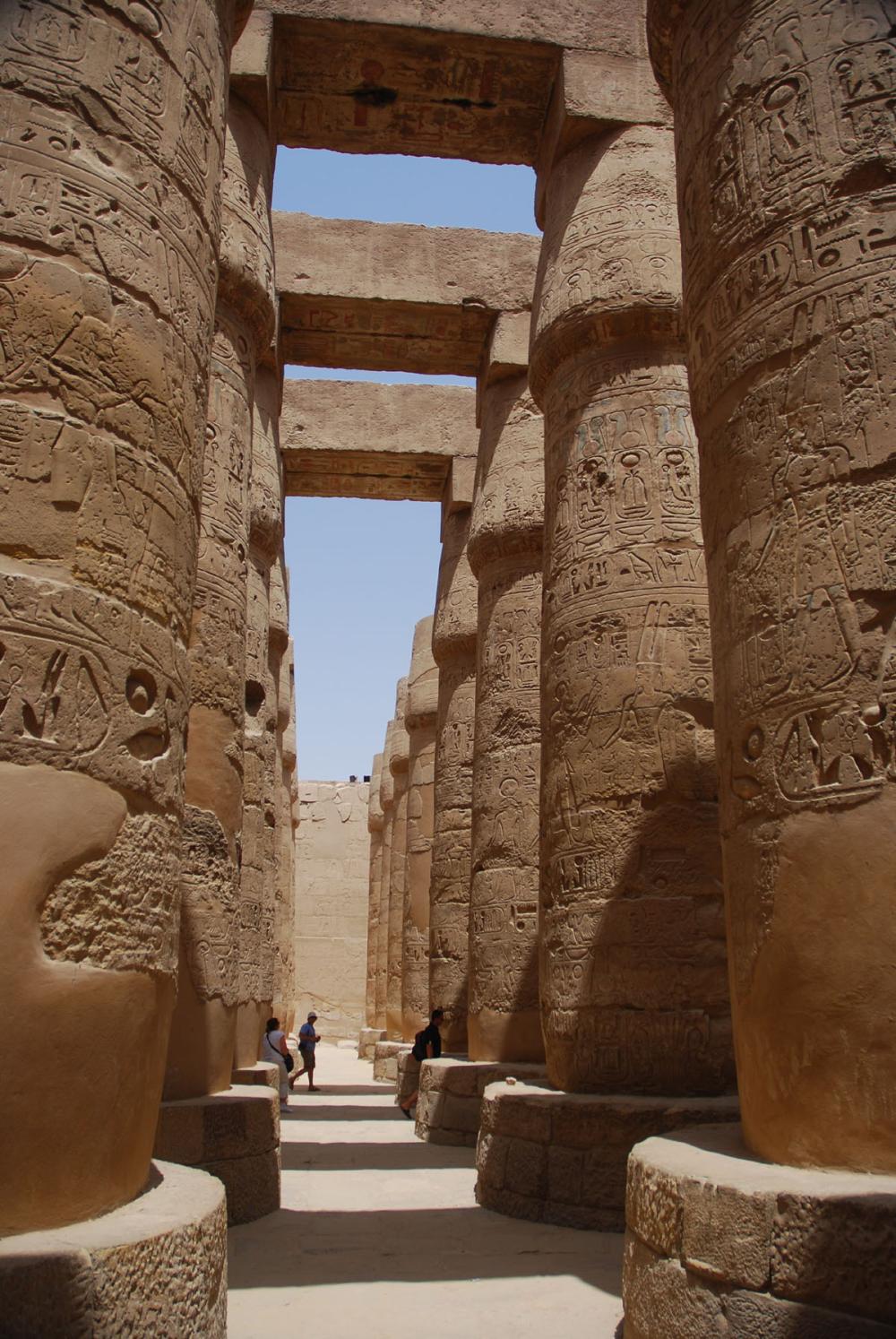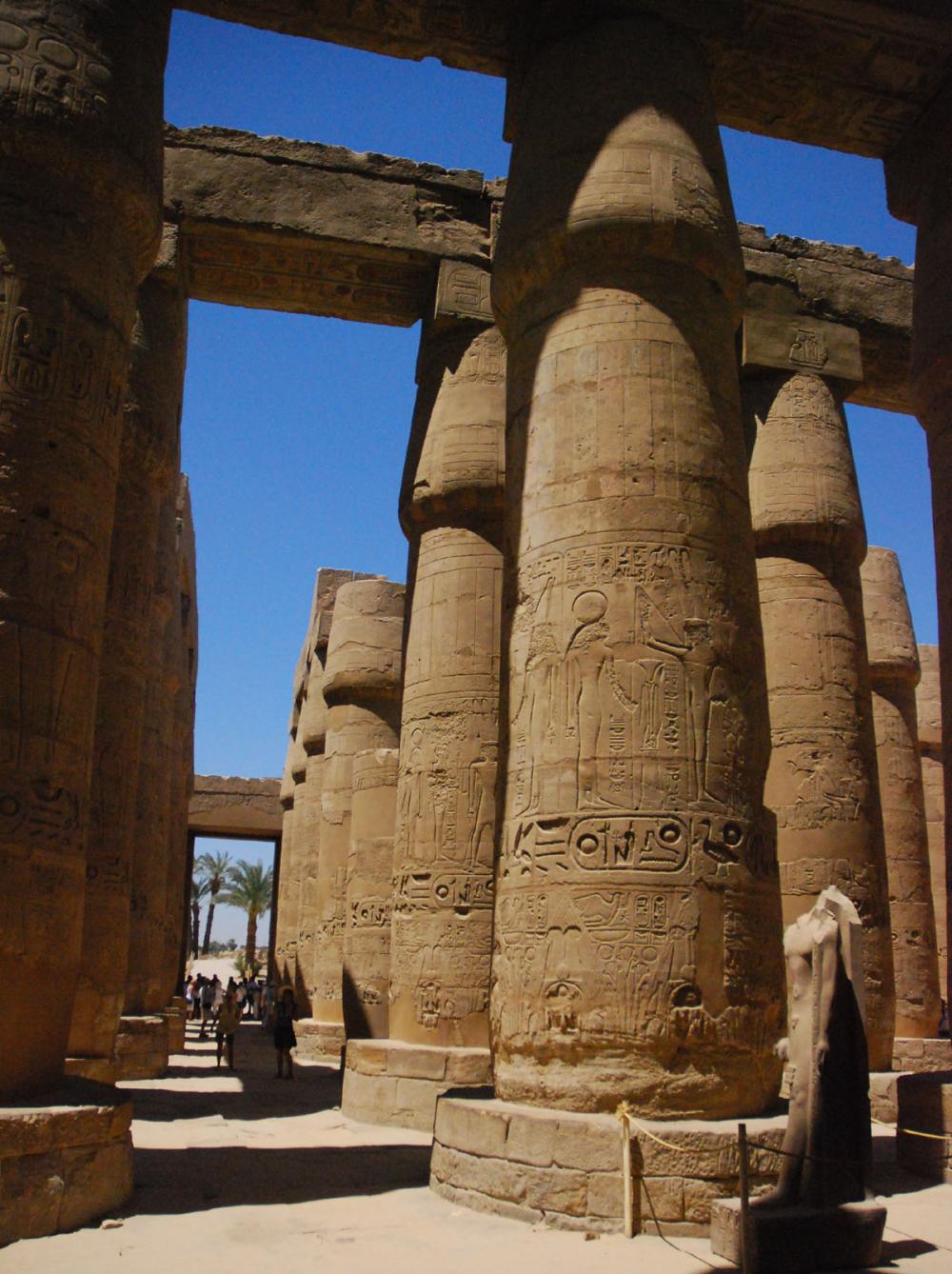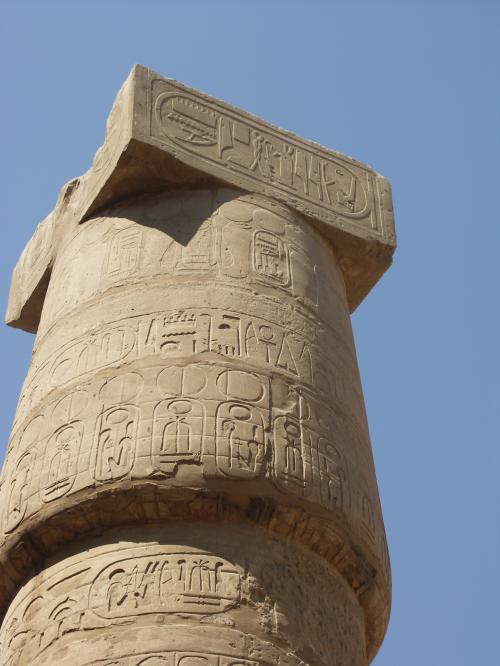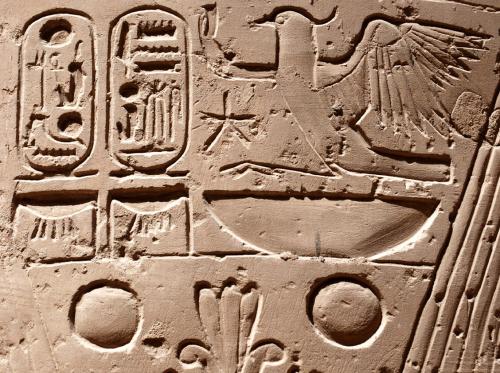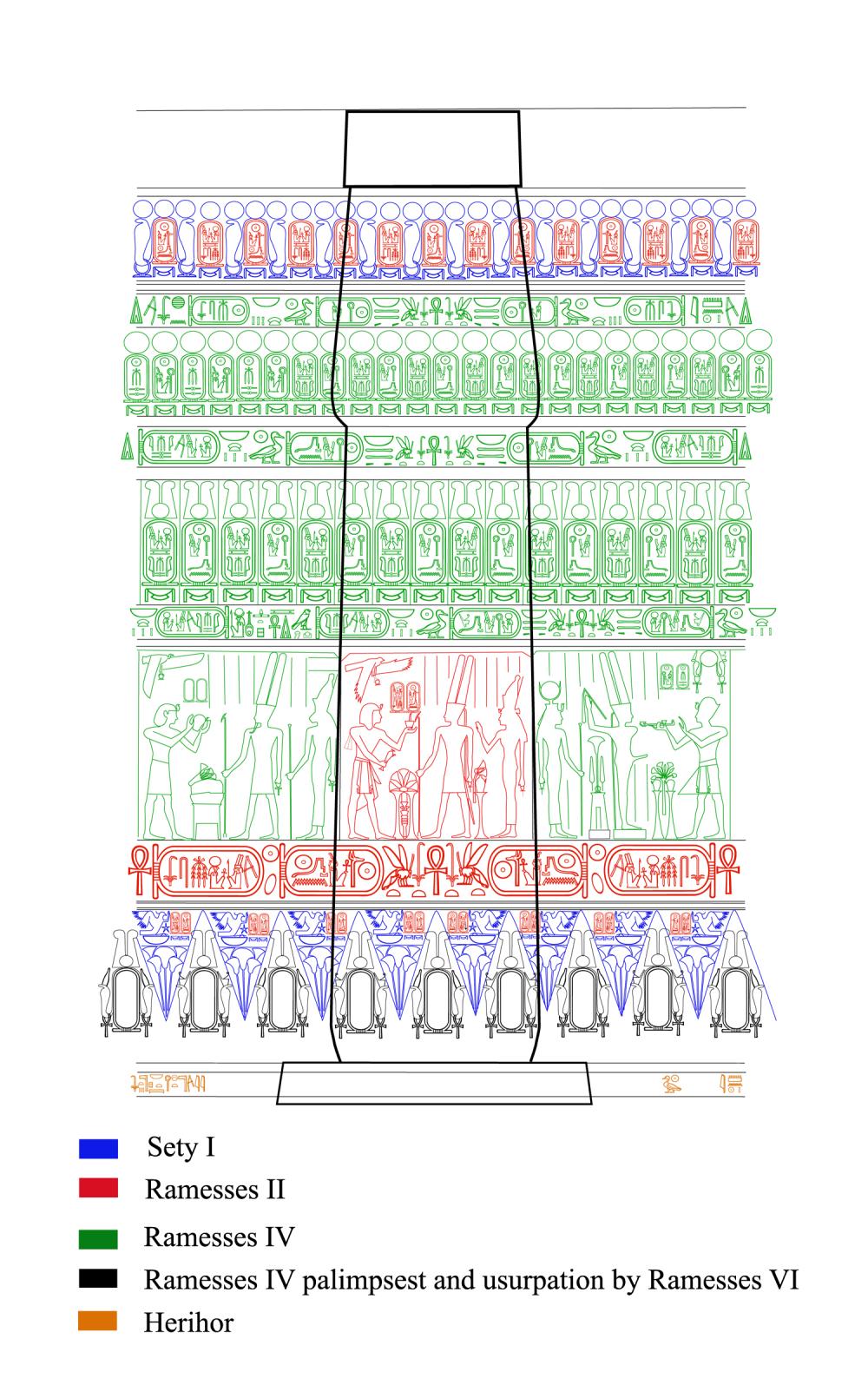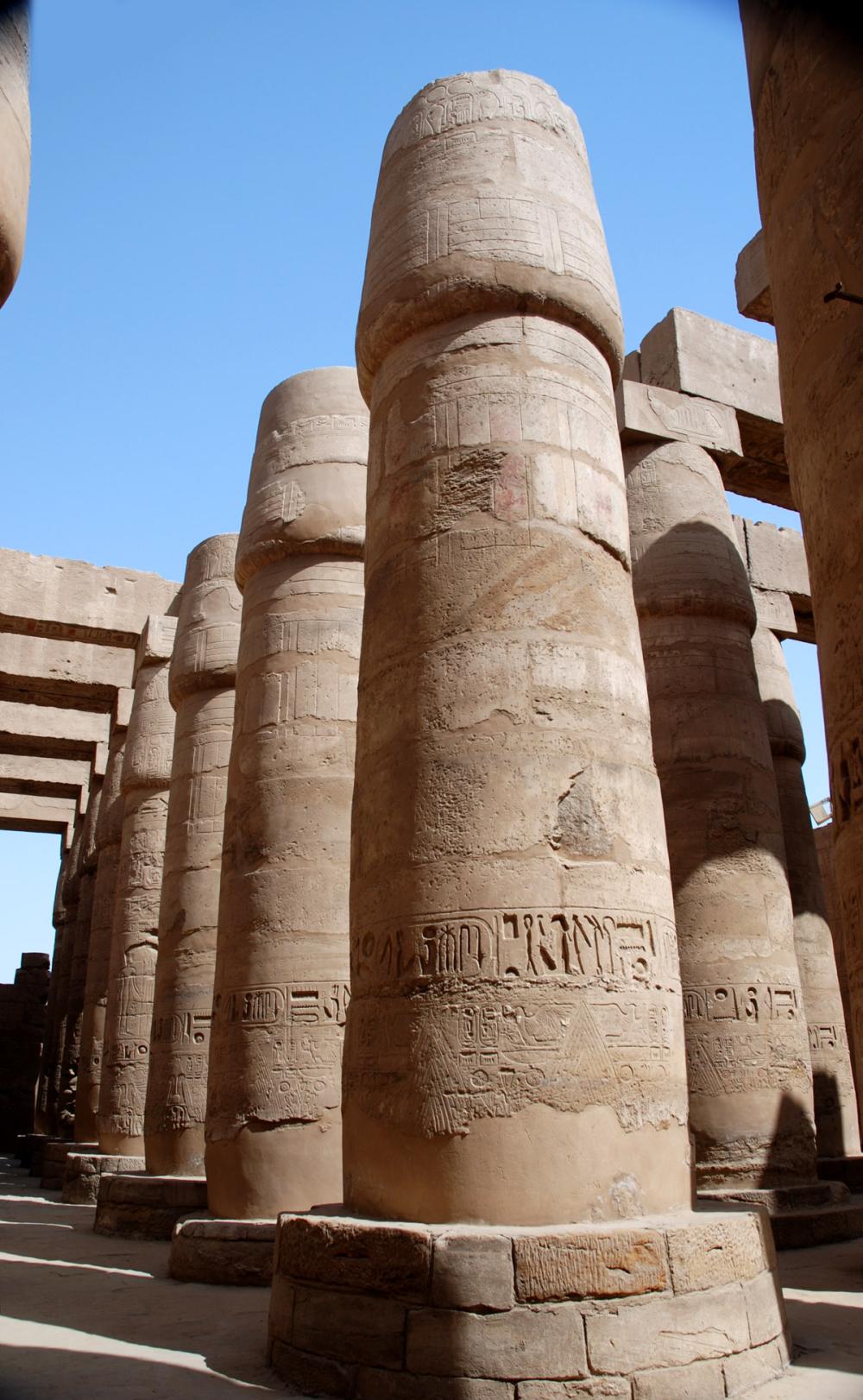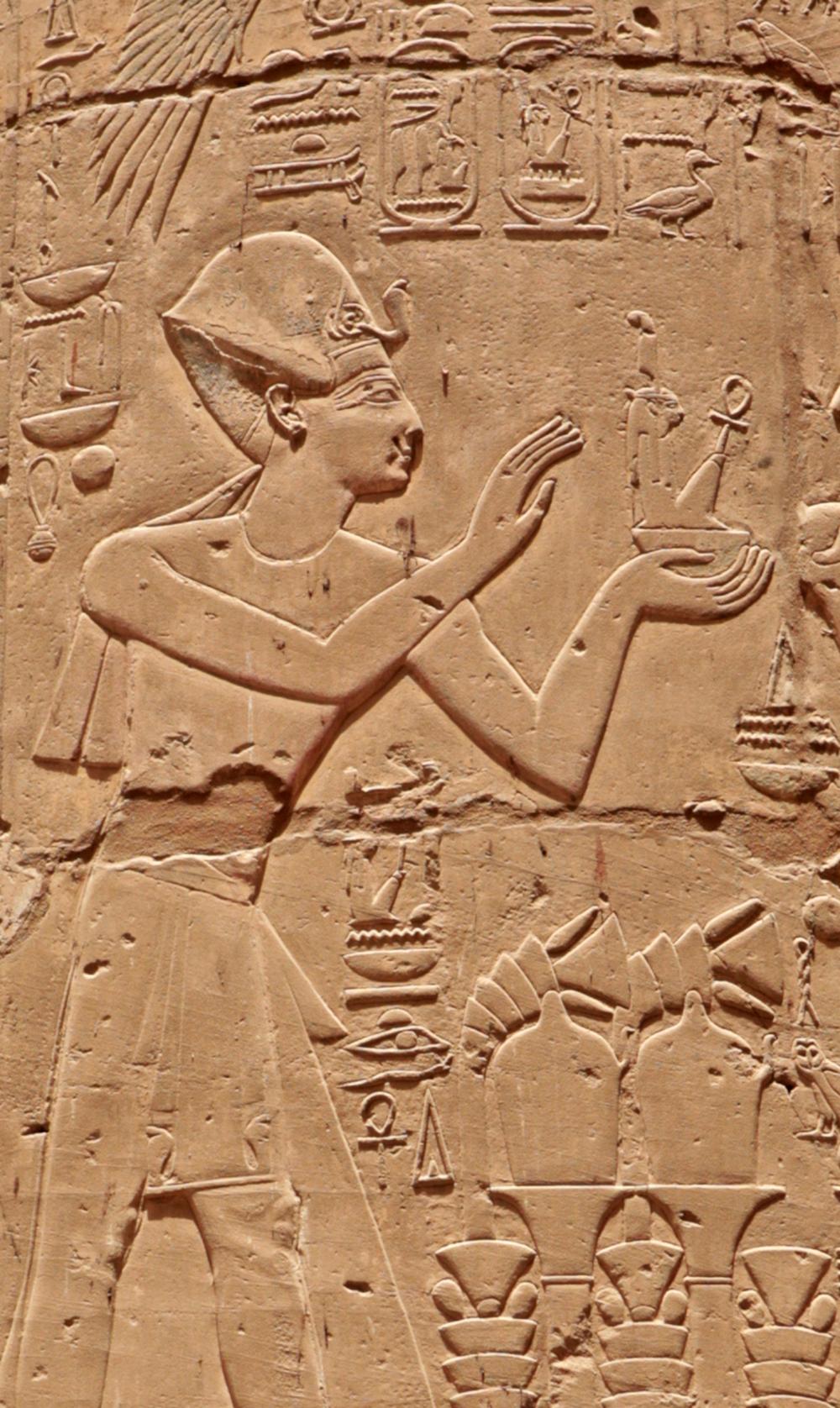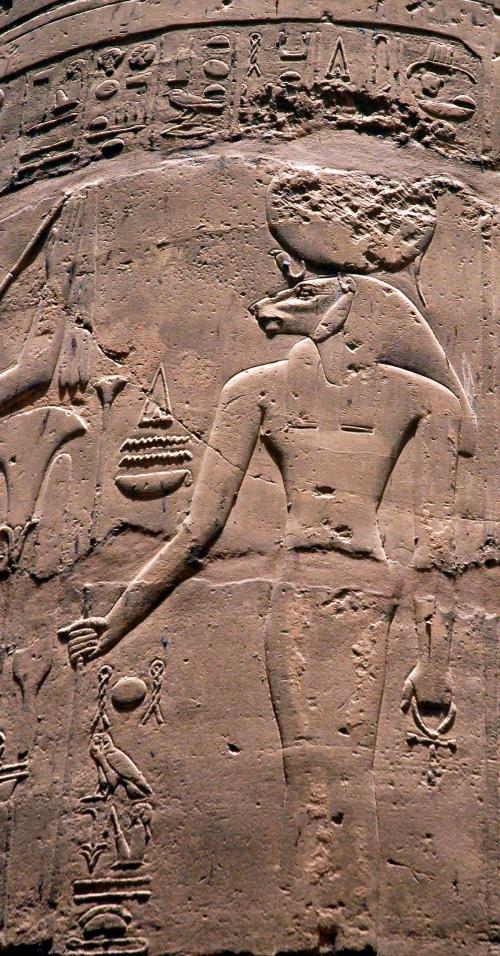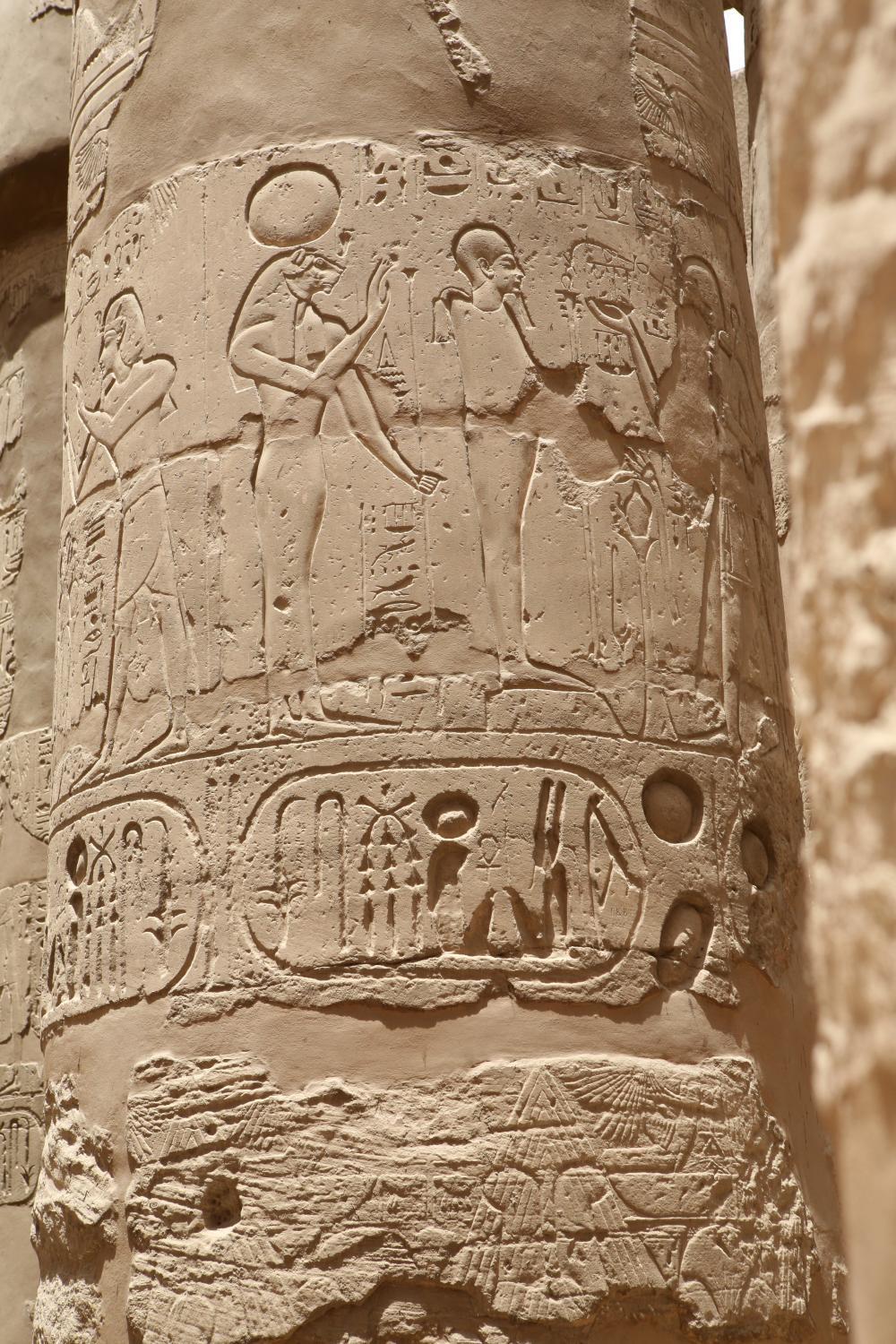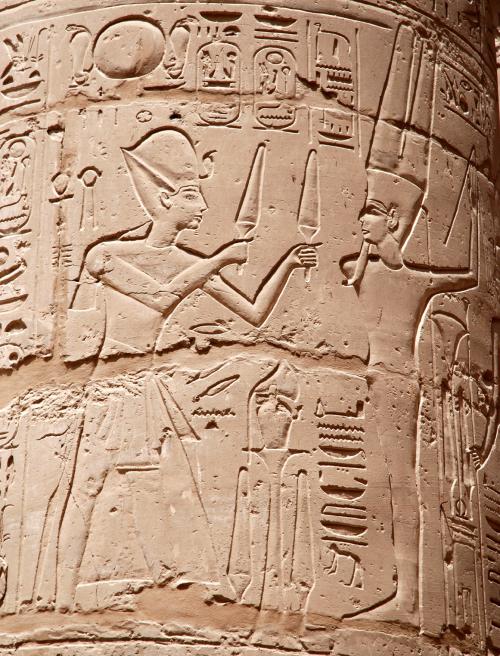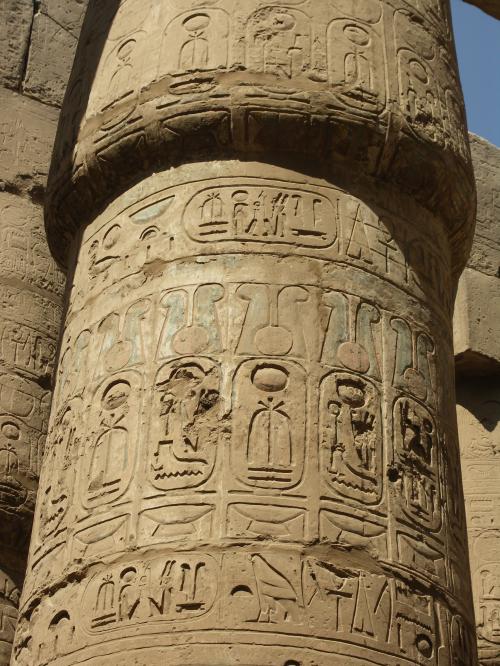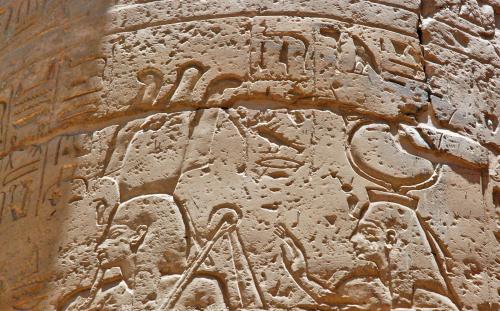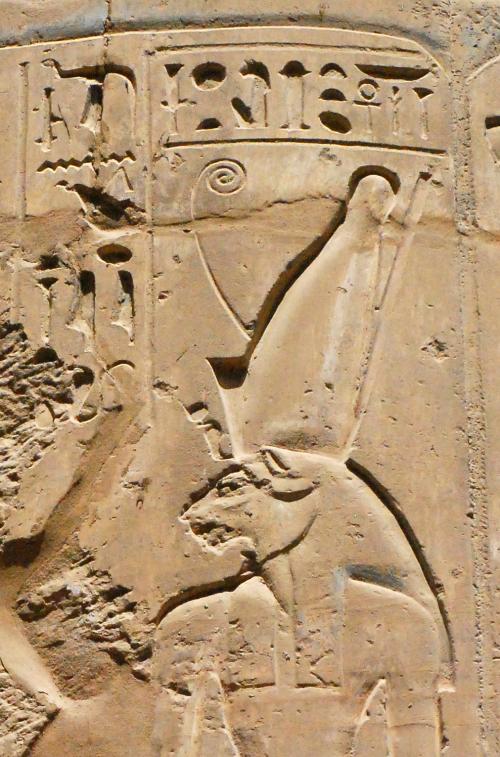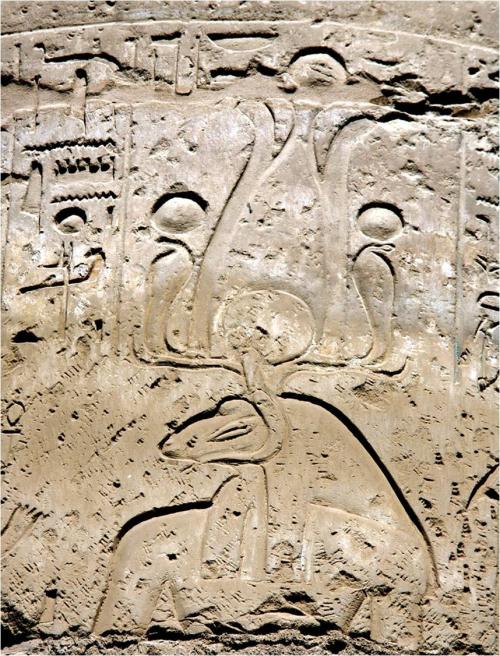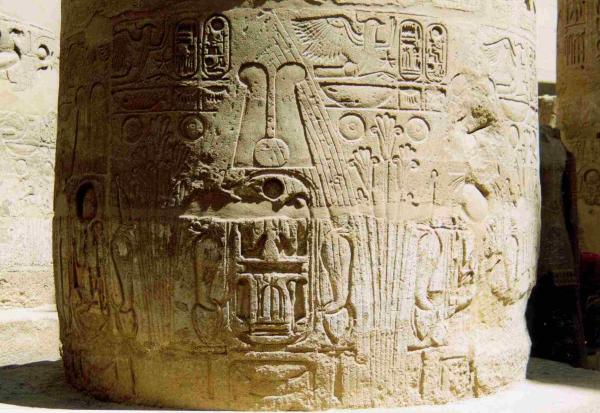The Small Columns
|
|
The 122 columns which comprise the bulk of this vast stone forest 12 meters (40 ft) high. They are only "small" in comparison to the 12 great columns in the nave. The smaller columns have closed-bud papyrus capitals imitating stalks which have not bloomed.
As one part of the temple as a whole, the Hypostyle Hall functioned as the "public room" of the god's house. Egyptian temples were designed as grander versions of typical Egyptian homes. Each house had a reception chamber with at least one column supporting the roof in even the poorest home.
Much grander by far than their own homes, the public was given access to this part of the temple during festivals to witness the procession of the god's portable shrine. Only a few Egyptians could read the hieroglyphic texts, but a pictorial design at the base of each column indicated they had permission to be here. Repeated several times around the circumference of all 134 columns is a design showing a small bird called a lapwing resting on a basket while adoring the king's cartouche with human arms that have sprouted from their chests. Above them, a tiny star spells out the word "adore." To the Literate scribes, they design reads: all the people adore the King. The illiterate could easily be taught to recognize this design as a visual sign meaning "you may stand here." The presence of these rekhyet-bird motifs may be an indication that, at least on certain festivals and special occasions, the common people of Egypt were allowed to enter the Great Hypostyle Hall and witness the sacred rites that took place in it during the grand annual festivals which punctuated the religious calendar.
The forest of columns in the Great Hypostyle Hall overwhelms the viewer with a bewildering array of carved relief scenes and hieroglyphic inscriptions, the sheer scale and complexity of which have largely defied scholarly efforts to record and study them (provisional analysis by Christophe 1955; Helck 1976).
As originally envisaged by its builders, the decorative scheme for these columns was much less elaborate than it later became. On most of the 122 closed-bud columns, Sety I and Ramesses II ordered a single ritual scene carved midway up the shafts but left the space around them blank. At the base of the shafts and on the capitals, they engraved stereotyped inscriptions and “heraldic” motifs. The upper shafts were inscribed with simple geometric patterns. This restrained program was akin to columns in other temples of the day, like the Ramesseum of Ramesses II inWestern Thebes or the forecourt of Luxor temple where the decoration is more sparce than at Karnak.
The scenes on these columns represent typical episodes from the daily cult rituals that took place in the temple sanctuary. In every case the pharaoh acts as chief priest adoring various gods. Amun-Re and his Triad appear most frequently, but other deities like Monthu, Isis, Horus, Re-Horakhty and Ptah, to name a few, may also stand before the king to receive his benefactions.
On most of the columns, Sety I and Ramesses II added a single ritual scene that was oriented so that the decoration faced viewers approaching from one of the two main axes. Where the north-south and east-west axes intersected, however, they added two scenes with one facing each axis. Sety and Ramesses were also careful to organize these scenes so that the king appeared to face towards the inner part of the temple while the gods faced outwards. Today, a patchwork of inscriptions blankets most of the columns. The density of this embellishment is due to Ramesses II and a number of his successors. Disregarding the balance between inscribed and blank surfaces, which allow inscriptions to be seen to advantage, Ramesses II and Ramesses IV filled these empty spaces— and even some that had already been decorated— with new inscriptions: additional cult scenes, friezes of royal name cartouches, and stereotyped hieroglyphic texts. Later in his reign, Ramesses II inserted deeply carved “bandeau inscriptions” on the lower shafts of the smaller columns, probably in connection with one of his jubilee festivals.
In the 20thDynasty, Ramesses IV ordered two additional ritual scenes carved on the remaining blank spaces and added several bands of stereotyped inscriptions and friezes over geometric patterns on most of the 122 smaller columns. Only his death prevented the complete realization of his designs, leaving the south-west quarter of the Hall in its original state.
Ramesses IV's ritual scenes tend to be more eclectic in their choice of gods who appear in them and more baroque in their iconography. Gods like Osiris and Thoth show up. Other deities familiar from the Nineteenth Dynasty scenes may now take on more elaborate identities. This is especially true of the composite goddesses who share the identities of not just one but as many as three or four female divines in one. So Mut becomes Mut-Bastet-Weret-hekau, a triple goddess! Not just their titles but their appearances become more complex and eclectic as well. Mut now appears more frequently as a lion-headed woman, often wearing unusual crowns.
Amun-Re himself sometimes takes on unusual forms as when he has the head of a ram. His most unique avatar is as Amun-Re-Userhet, or "Amun-Re-is-Mighty-of-Prow," a divine incarnation of the gods sacred river barge with its giant ram-headed figureheads at prow and stern. This form of Amun is a ram-headed man wearing the same Atef-crown on his head found on the prow of the river barge.
Ramesses IV also superimposed giant cartouches over triangular “papyrus leaf patterns” at the base of columns along the main processional axis. These cartouches are intricate palimpsests, for Ramesses IV later reworked them to modify the hieroglyphic “spelling” of his names. Later still, Ramesses VI (ruled ca. 1141-1133 BCE) surcharged them, carving his own names over Ramesses IV’s. In each case, sculptors effected these changes by filling in the older version with plaster and carving over it. Most of this plaster has fallen away, revealing complex jumbles of hieroglyphs. Herihor (ruled ca. 1080-1072 BCE) made the last additions by inscribing the column bases.
|

